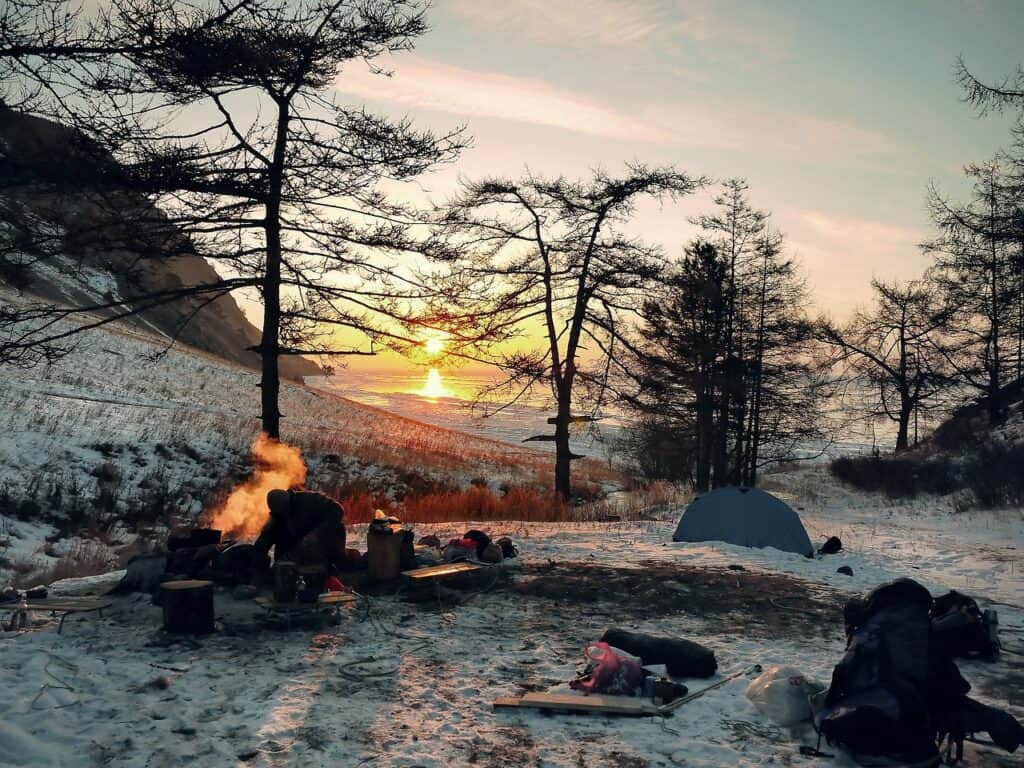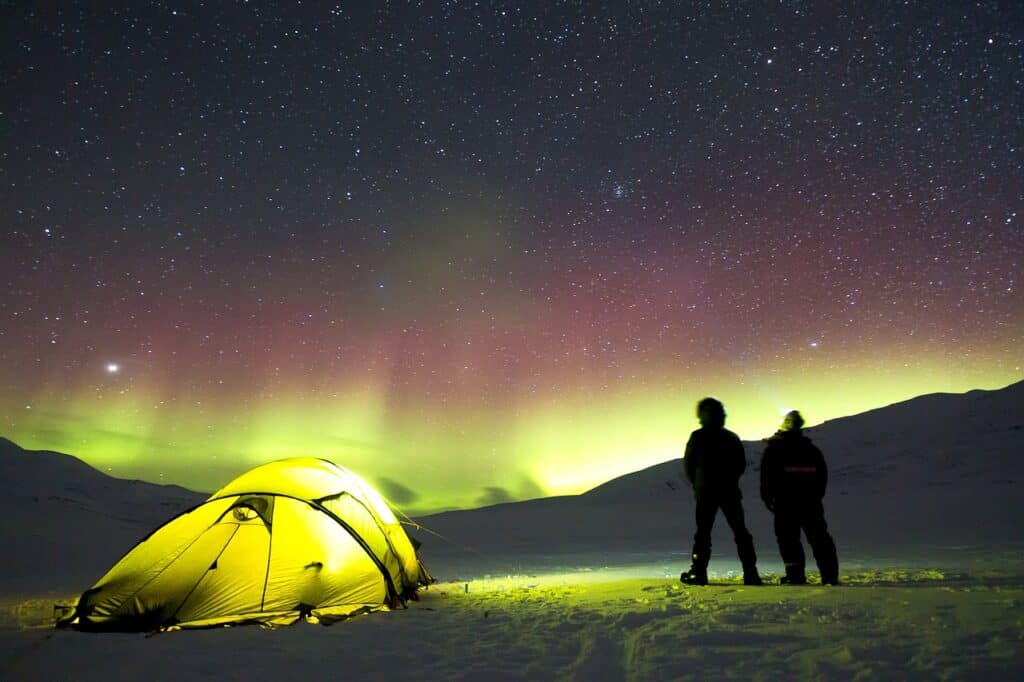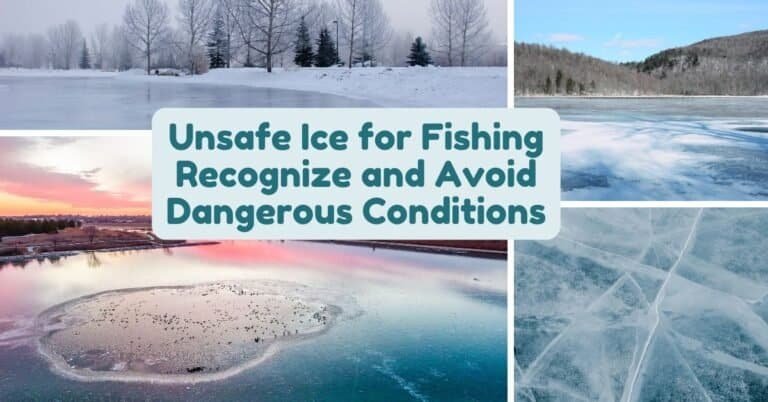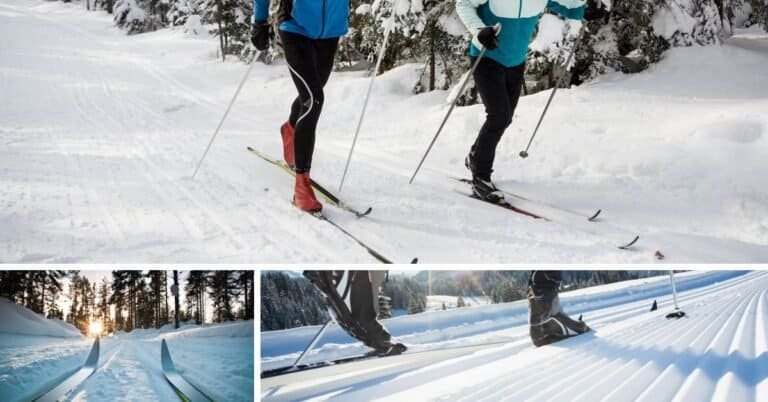Winter Camping Can be Exhilarating
Christmas camping (winter camping) offers a unique and exhilarating experience for outdoor enthusiasts. Amidst the pristine beauty of snow-covered landscapes, adventurers can find solace and challenge in equal measure. In this comprehensive guide, we look into the intricacies of Christmas camping, covering everything from essential equipment to safety considerations and outdoor activities. Whether you’re a seasoned winter camper or embarking on your first cold-weather excursion, this article will make sure you have the knowledge and skills to thrive in the frosty wilderness. Go camping this holiday season, possibly at an open National Park or local campground.
Essential Equipment for Christmas Camping
When venturing into the winter wilderness, having the correct gear can make all the difference between an enjoyable adventure and a miserable ordeal. Here are the essential items you’ll need to ensure a safe and comfortable camping experience:
Insulated Tent
An insulated tent is your sanctuary in the winter wilderness, providing shelter from biting winds, snowfall, and frigid temperatures. Unlike traditional three-season tents, insulated tents are designed to withstand harsh winter conditions and effectively retain heat. Here’s what to consider when selecting and setting up an insulated tent for Christmas camping:
Construction and Materials
Insulated tents feature robust construction and high-quality materials to provide reliable protection against the elements. Look for tents with durable fabrics, reinforced seams, and sturdy poles designed to withstand heavy snow loads and strong winds. Ripstop nylon or polyester fabrics with waterproof coatings are standard for outer tent layers, while breathable materials are used for inner tent walls to minimize condensation buildup.
Double-Walled Design
Many insulated tents employ a double-walled design consisting of an inner tent and an outer rainfly. This design helps create a layer of trapped air between the tent walls, providing additional insulation and reducing heat loss. Ensure the rainfly extends to the ground and can be securely staked out to prevent snow from blowing underneath and into the tent.
Ventilation
Proper ventilation is essential in Christmas camping to prevent condensation buildup inside the tent. This can dampen clothing and sleeping bags and reduce insulation effectiveness. Look for tents with adjustable vents or mesh panels that allow airflow while blocking snow and wind. Ventilation openings should be strategically placed to minimize drafts and maintain a comfortable interior temperature.
Vestibules and Entryways
Vestibules are covered areas outside the tent door where you can store gear and remove wet or snowy clothing before entering the tent. Insulated tents often feature spacious vestibules with ample room for storing backpacks, boots, and other gear, keeping the interior clean and organized. Choose a tent with multiple entry points if camping with a group to avoid congestion and facilitate easy access.
Snow Skirts and Guy Lines
Snow skirts or snow flaps are additional fabric panels extending around the tent’s base to seal drafts and prevent snow from blowing inside. Securely anchor the tent with guy lines and snow stakes to provide stability in windy conditions and prevent the tent from collapsing under the weight of accumulated snow. Regularly shake off the snow from the tent roof to avoid buildup and to maintain structural integrity.
Interior Features
Consider the layout and features of the tent’s interior to ensure comfort and convenience during your Christmas camping trip. Look for tents with gear lofts, pockets, and hang loops for storing essentials and keeping them within reach. Some tents also come with removable floor panels that protect the tent floor from abrasion and moisture.
Proper Setup
Take the time to properly set up your insulated tent to maximize its effectiveness and durability. Choose a flat and level campsite free from rocks and debris, and clear away any snow or ice before pitching the tent. Stake the tent securely and tension guy lines to ensure stability in windy conditions. Check and adjust ventilation openings as needed to maintain airflow and minimize condensation.
Sleeping Bag and Sleeping Pad
A good night’s sleep is crucial for enjoying your Christmas camping adventure to the fullest and having the right sleeping bag and pad will make all the difference in making you comfortable and staying warm throughout the night.
Sleeping Bag
When selecting a sleeping bag for Christmas camping, warmth and insulation are paramount. Look for a sleeping bag designed for cold temperatures with a temperature rating well below the lowest temperatures you expect to encounter. Manufacturers typically provide temperature ratings to give you an idea of the bag’s performance in different conditions.
Consider a mummy-style sleeping bag with a hood to trap the heat more effectively around your head and body for extreme cold. Mummy bags also tend to have a narrower cut, which minimizes air pockets and maximizes warmth retention. Pay attention to the insulation type as well; down insulation is known for its excellent warmth-to-weight ratio, while synthetic insulation performs better in damp conditions.
To enhance your sleeping bag’s insulation, consider using a fleece or silk sleeping bag liner. Liners add extra warmth, help keep your sleeping bag clean, and extend its lifespan. Additionally, storing your sleeping bag uncompressed in a large sack or hanging it up when not in use will help maintain its loft and insulation properties over time.
Do not sleep in your clothes. People think this will keep them warm and the opposite is true. Sleeping in your clothes will cause you to sweat and form condensation inside your sleeping bag, making you colder. Then, the next day, you will wear damp clothes that will not make the camping experience enjoyable.
Sleeping Pad
Equally important as your sleeping bag is your sleeping pad, which provides insulation and cushioning between your body and the cold ground. Even the warmest sleeping bag can lose heat rapidly when placed directly on the frozen earth, making a quality sleeping pad essential for Christmas camping.
When choosing a sleeping pad for winter use, opt for one with a high R-value, which measures its thermal resistance. The higher the R-value, the better the pad insulates you from the cold ground. Look for pads designed for cold-weather camping, often featuring additional insulation layers or reflective materials to trap the heat more effectively.
Inflatable sleeping pads offer excellent insulation and comfort while still being lightweight and packable, making them a popular choice among winter campers. However, check for durability and puncture resistance, especially when camping in rugged terrain. Foam sleeping pads are another reliable option, providing insulation even when compressed and offering peace of mind against punctures.
To maximize insulation, choose a sleeping pad that matches the dimensions of your tent floor and provides full coverage from head to toe. Consider stacking two pads or using a closed-cell foam pad underneath an inflatable pad for added warmth and redundancy in case of equipment failure.
When setting up your sleeping pad inside your tent, ensure it is fully inflated and positioned securely to prevent sliding or shifting during the night. Remove sharp objects or debris beneath the pad to avoid punctures or damage. A well-insulated sleeping pad paired with a properly rated sleeping bag will keep you warm and comfortable throughout even the coldest winter nights, allowing you to rise refreshed and ready for another day of adventure in the snow-covered wilderness.
Clothing Layers
Proper layering is essential to staying warm and comfortable during your Christmas camping adventures. Wearing multiple layers of clothing will trap heat close to your body while managing moisture and adapting to changing weather conditions. Here’s how to effectively layer your clothing for Christmas camping:
Base Layer
The base layer, also known as the thermal layer, is your first line of defense against the cold. Choose moisture-wicking fabrics such as synthetic materials or merino wool that draw sweat away from your skin to keep you dry and comfortable. Avoid cotton, as it retains moisture and can lead to chilling. Remember the old adage cotton kills. Base layer tops and bottoms should fit snugly but not restrict movement, providing a close-to-skin insulation barrier.
Insulating Layer
The insulating layer adds warmth by trapping heat close to your body. Fleece jackets, down sweaters, or synthetic puffy jackets are ideal for insulating layers. Look for garments with lofted insulation that provide an excellent warmth-to-weight ratio without bulkiness. Insulating layers should be breathable to allow moisture to escape while retaining heat.
Mid Layer
The mid-layer adds versatility to your clothing system by providing additional insulation. This layer can consist of a lightweight fleece or softshell jacket that offers warmth without compromising mobility. Choose a mid-layer with zippered vents or adjustable features for temperature regulation during high-intensity activities.
Shell Layer
The shell layer is your outermost barrier against wind, rain, and snow. Waterproof and windproof jackets and pants made of Gore-Tex or similar breathable membranes are essential for Christmas camping. Look for garments with sealed seams, adjustable hoods, and storm flaps to keep moisture out and retain heat. Shell layers should be roomy enough to fit comfortably over insulating layers without restricting movement.
Accessories
Don’t forget to protect your extremities with appropriate accessories. Insulated gloves or mittens, woolen hats, toques or beanies, and neck gaiters or balaclavas are essential for keeping hands, head, and neck warm. Choose moisture-wicking socks made of synthetic materials or merino wool to keep feet dry and prevent blisters. Insulated boots with waterproof membranes provide traction and protection against cold and wet conditions.
Additional Considerations
Layering is about adding insulation, managing moisture, and adapting to changing weather conditions. Dress in layers that can be easily added or removed as needed to regulate body temperature. Avoid overdressing to prevent sweating; moisture can quickly lead to chilling in cold conditions. Carry spare clothing layers in your backpack for emergencies or unexpected weather changes.
Layering for Activity
Adjust your clothing layers to maintain comfort and prevent overheating when engaging in high-intensity activities such as hiking or skiing. Start with a lightweight base layer to wick sweat away from your skin, followed by a breathable mid-layer for insulation. Choose outer layers with zippered vents or pit zips to release excess heat during exertion. Pack extra clothing layers in your backpack to change into during rest breaks or when temperatures drop.
Following these layering principles and choosing appropriate clothing for Christmas camping, you can stay warm, dry, and comfortable in the most challenging outdoor conditions. Experiment with different combinations of clothing layers to find what works best for you, and always prioritize functionality, comfort, and safety when planning your winter adventures.

Portable Stove or Cooking System
A reliable cooking system is essential for preparing hot meals and beverages to keep you fueled and warm. Choose a lightweight, easy-to-use, and fuel-efficient portable stove or cooking system. Consider factors such as fuel availability and stove stability in windy conditions. You can also cook over a campfire.
Navigating through snowy terrain can be challenging, especially in whiteout conditions. Equip yourself with a GPS device, map, and compass to help you stay on course and navigate safely. Familiarize yourself with basic navigation techniques before starting your Christmas camping trip.
First Aid Kit
A well-stocked first aid kit is indispensable for addressing minor injuries and medical emergencies in the wilderness. Pack essential items such as bandages, antiseptic wipes, pain relievers, and blister treatment supplies. Equip your first aid kit based on your specific medical needs and the duration of your trip.
Lighting
With shorter daylight hours in winter, reliable lighting is essential for navigating your campsite and performing tasks after dark. Pack a lantern, flashlight, or headlamp with extra batteries to ensure you have sufficient illumination when needed. Consider bringing backup lighting options for added reliability.
Choosing the Right Location
Selecting the perfect camping spot can significantly impact your overall experience in the winter wilderness. Here are some factors to consider when choosing a location for your Christmas camping adventure:
Considerations for Terrain and Conditions
Evaluate the terrain and weather conditions of potential camping sites before deciding. Look for areas with level ground and natural windbreaks to enhance shelter and comfort. Avoid camping near avalanche-prone slopes, frozen bodies of water, or other potential hazards.

Accessibility and Safety
Choose a camping location accessible by vehicle or foot, depending on your mode of transportation. Ensure that the chosen area is safe for camping and complies with local regulations and restrictions. Before heading out, check for any closures or advisories due to weather or wildlife activity.
Permits and Regulations
Research any permits or regulations required for camping in your chosen area, such as wilderness permits or camping fees. Obtain necessary permits and familiarize yourself with any rules or restrictions regarding campfires, waste disposal, and wildlife interactions.
Building a Proper Shelter
Building a sturdy and insulated shelter is crucial for protecting yourself from the elements and maintaining warmth in the winter wilderness. Here are some shelter options and construction techniques to consider for your Christmas camping trip:
Types of Shelters
Several types of shelters are suitable for Christmas camping, each with advantages and considerations. Tents offer convenience and comfort but require proper setup to withstand snow and wind. Snow caves provide excellent insulation and wind protection but require skill and effort to construct safely. Lean-tos and tarp shelters offer a lightweight and versatile alternative but may require additional insulation in cold conditions.
Insulation and Wind Protection
Regardless of the type of shelter you choose, adequate insulation and wind protection are essential for staying warm and comfortable. Use insulating materials such as sleeping pads, blankets, or pine boughs to create a barrier between you and the cold ground. Secure your shelter’s walls and openings to prevent drafts and snow from entering.
Snow Cave Construction
Building a snow cave can provide excellent protection from the elements and is relatively simple with the proper techniques. Look for a compacted snowdrift or build a mound of snow to carve out your cave. Dig a small entrance tunnel angled upward to prevent cold air from settling inside. Create a sleeping platform and ventilation hole inside the cave to improve airflow and minimize condensation.
Setting Up a Tent in the Snow
Proper setup is critical to ensure stability and weather resistance if you are using a tent for Christmas camping. Select a flat and level spot for your tent and clear away any snow or debris. Use snow stakes or anchors to secure your tent to the ground and prevent it from shifting in high winds. Consider using a snow skirt or snow flaps to seal the tent’s perimeter and minimize drafts.
Safety Considerations
Christmas camping presents unique challenges and hazards that require careful planning and preparation. Here are some safety considerations to keep in mind when venturing into the winter wilderness:
Frostbite and Hypothermia Prevention
Protecting yourself from cold-related injuries such as frostbite and hypothermia is paramount in Christmas camping. Dress in layers and keep dry to prevent heat loss and moisture buildup. Monitor yourself and fellow campers for signs of cold-related injuries.
Learn to recognize the early signs and symptoms of frostbite and hypothermia, and take prompt action if you or a camping companion show any signs of cold-related injury. Symptoms of frostbite include numbness, tingling, pain, or discoloration of the skin, particularly in the extremities. Symptoms of hypothermia include shivering, confusion, slurred speech, and drowsiness.
If you suspect frostbite or hypothermia, seek shelter immediately, remove wet clothing, and warm the affected area slowly and gently using body heat.
Despite taking precautions, cold-related injuries can still occur, especially in extreme weather conditions. Know your limits and recognize when it’s time to seek help or retreat to a warmer environment. Carry a means of communication such as a cell phone or satellite messenger for emergencies and plan to contact emergency services if needed. Be prepared to administer first aid and assist others in your camping group in case of cold-related injuries.
Staying vigilant about your health and safety, you can minimize the risk of frostbite and hypothermia and enjoy a safe and enjoyable Christmas camping experience. Always prioritize prevention and preparation when planning outdoor adventures in cold weather, and be prepared to adapt to changing conditions to stay safe in the winter wilderness.
Avalanche Awareness
If camping in mountainous terrain, be aware of the risk of avalanches and take precautions to minimize exposure. Avoid camping or traveling on steep slopes or in avalanche-prone areas, especially during periods of high avalanche danger. Carry avalanche safety equipment such as transceivers, probes, and shovels, and practice avalanche rescue techniques with your group. Take an avalanche course and always obtain the current avalanche conditions for the area you are going into.
Fire Safety
Building and maintaining a fire can provide warmth and comfort during Christmas camping trips, but it requires caution and responsibility. When building a campfire, use a designated fire ring or fire pit and clear away any flammable materials from the surrounding area. Keep a safe distance from the fire and never leave it unattended. Ensure your fire is fully extinguished before leaving the campsite or going to sleep.
Wildlife Awareness
Be aware of wildlife activity in the area and take precautions to prevent encounters and conflicts. Store food and scented items securely in bear-proof containers or hanging bear bags to prevent attracting wildlife to your campsite. Keep a safe distance from wildlife and avoid feeding or approaching animals. Familiarize yourself with local wildlife species and their behaviors to mitigate potential risks.
Enjoying Outdoor Activities
Christmas camping offers ample opportunities for outdoor recreation and exploration. Here are some popular activities to enjoy during your Christmas camping trip:
Skiing and Snowboarding
Take advantage of snowy slopes and pristine powder for skiing and snowboarding adventures. Whether you prefer downhill skiing, cross-country skiing, or snowboarding, Christmas camping provides access to a variety of trails and terrain for all skill levels. Remember to dress appropriately for the conditions and stay hydrated while engaging in winter sports.
Snowshoeing
Explore the winter landscape on snowshoes and discover hidden gems off the beaten path. Snowshoeing is a low-impact activity suitable for all ages and fitness levels, offering a unique perspective on the snowy wilderness. Bring a map or GPS device to navigate unfamiliar terrain and enjoy the tranquility of winter scenery.
Ice Fishing
Test your angling skills and reel in a catch beneath the frozen surface of lakes and rivers. Ice fishing is a popular winter pastime that combines the thrill of fishing with the serenity of the great outdoors. Drill a hole in the ice, set up your fishing gear, and wait patiently for a bite while soaking in the beauty of the winter landscape.
Mastering the Art of Christmas Camping
Christmas camping is a rewarding and exhilarating experience that allows you to connect with nature and push your boundaries in challenging conditions. By equipping yourself with the right gear, knowledge, and skills, you can enjoy the beauty and serenity of the winter wilderness while staying safe and comfortable. Whether you’re seeking adventure, solitude, or simply a change of scenery, winter camping offers endless opportunities for exploration and discovery. So bundle up, embrace the cold, and embark on your next Christmas camping adventure with confidence and excitement.
FAQ Section
Is Christmas camping safe for beginners?
Christmas camping can be safe for beginners with proper preparation, planning, and guidance. Start with short trips close to home and gradually build up your skill level and experience before tackling more challenging winter conditions.
What should I do if I encounter wildlife during Christmas camping?
If you encounter wildlife while Christmas camping, remain calm and avoid startling or provoking the animals. Back away slowly and give the wildlife plenty of space to avoid conflicts. Store food and scented items securely to lower the risk of attracting wildlife to your campsite.
What should I do if I get lost or stranded during a Christmas camping trip?
Stay calm and assess your situation if you get lost or stranded during a Christmas camping trip. Stay put if you need clarification on your location, and conserve your energy and resources while waiting for help. Signal for assistance using a whistle, your personal location device, mirror, or brightly colored clothing, and make yourself visible to search and rescue teams.
How can I prevent condensation buildup inside my tent or shelter?
To prevent condensation buildup inside your tent or shelter, ensure proper ventilation by leaving vents open and creating airflow. Avoid breathing directly into your sleeping bag or shelter, as moisture from your breath can contribute to condensation. Consider using moisture-wicking materials for bedding and clothing to minimize moisture buildup.
What should I do if my camping gear gets wet during a Christmas camping trip?
If your camping gear gets wet during a Christmas camping trip, dry it out as soon as possible to prevent hypothermia and discomfort. Hang wet clothing and gear near a heat source
Disclaimer: This blog post contains affiliate links




